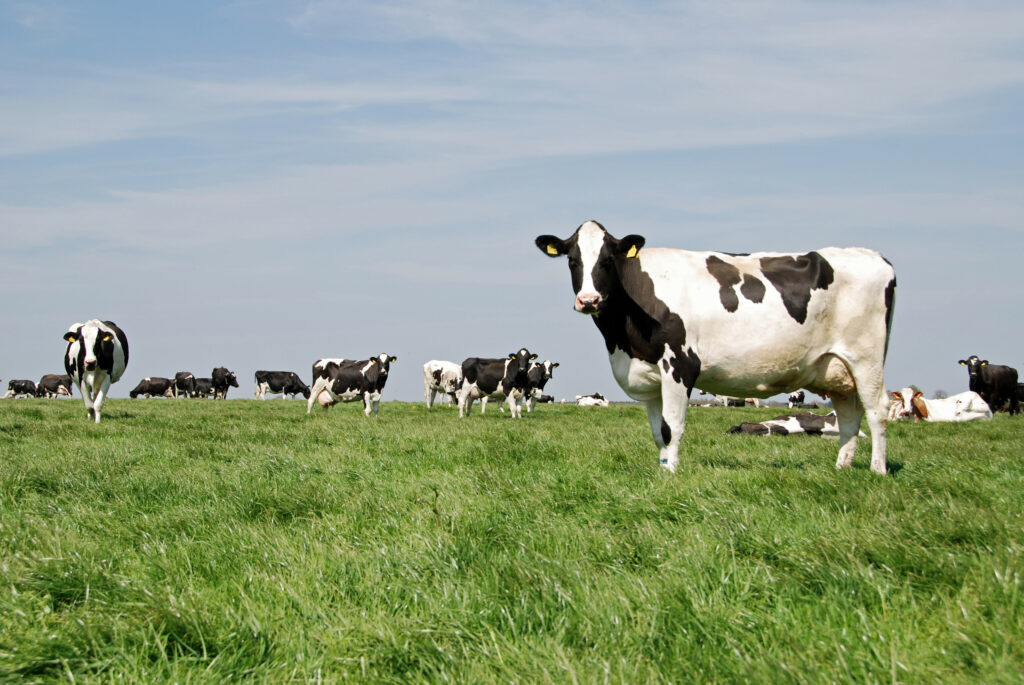Building grass cover during August is essential in extending the grazing season. This has benefits form an environmental and animal performance perspective. Extended grazing results in less silage in the diet reducing methane production, while achieving cheaper gains from grazed grass. Where animals have shorter housed periods, less slurry is generated reducing costs and less ammonia emissions from manure storage.Arrabawn Signpost Farmer’s Conor and Vincent O’Brien are Milking 130 cows in Tynagh Co. Galway. With a stocking rate of 3.2 Livestock Units on the milking platform, the O’Brien’s have been building grass cover on the farm since mid-August. The sole purpose of building grass cover at this time of year is to keep grass in the diet for as long as possible, which is generally until mid-November on the O’Brien’s farm. When building grass cover demand is within control; however, growth is highly dependent on weather conditions and land type. Flexibility is required throughout the autumn and the measuring of grass is of upmost importance to know how much grass you have on the farm and how much you need to have in front of cows. If at any stage average farm cover drops below target, corrective action needs to happen quickly. Animals will be required to enter grass covers above 1400kg/DM/ha which is the target for summer months. In managing this the O’Brien’s focus on allocating grass using strip wires to ensure paddock damage is minimised and that residuals of 4 cm are achieved. Recent clover scoring on the O’Brien’s farm showed 37% of the farm having a high clover level, 18% with a medium clover level and 32% with a low clover level. This has aided in decision making around fertiliser application with only 15 units of protected urea applied in mid-August on paddocks with no clover and slurry from the collecting yard targeted to grazed paddocks. This along with bringing silage ground back into the rotation has aided the building of grass cover on the O’Brien’s farm.
Nitrogen Response
Matching Nitrogen (N) application to grass growth optimises the efficiency of N and reduces greenhouse gas emissions. Response to Nitrogen declines as we progress through the autumn. Teagasc Research carried out over a 3-year period at four sites in Wexford, Cork, Louth & Mayo within the Agricultural Catchments show the average response to per kilo of N applied during August, September and October were 27kg, 19kg and 10kg respectively (Figure 1).

Grazing Targets
PastureBase figures for the O’Brien’s Farm currently stand with an average farm cover of 1000kg/DM/ha and a cover per livestock unit of 304. These are good guideline figures to follow for the mid-September period however, regular measurement is required to identify where deficits may occur. Supplementation may be required to fill deficits but keeping grass in the diet should be priority for all farmers at this stage. It is important to note that grazing targets differ depending on stocking rate and land type.
Reminder
Chemical fertiliser (Nitrogen and Phosphorous) must be spread before the 15th of September.
Slurry must be applied before the 1st of October and ensure slurry tanks are completely empty before the housed period.
Summary
In summary cows should be fed using the cheapest feed available, which is grass, while also setting up the farm for spring grazing. Autumn management of grass has a large influence on the supply and quality of grass available for the following spring and so it is vital to get autumn grass management correct. Grass budgeting tools are available to farmers on PastureBase and are useful in keeping the farm on track for the autumn period. Have your fertiliser applied before the 15th of September and make sure slurry tanks are empty by the 1st of October.

